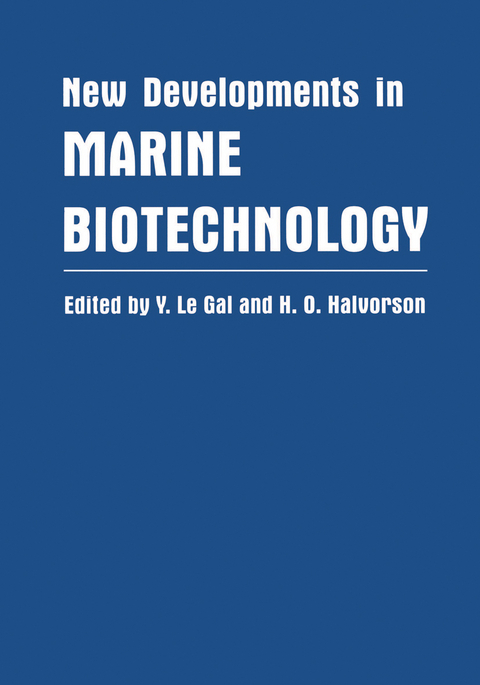
New Developments in Marine Biotechnology
Springer-Verlag New York Inc.
978-1-4419-3300-3 (ISBN)
Biotechnology: Biology or Technology? Keynote Lecture; A. Kornberg. Molecular Biology and Transgenic Animals: The Paradox of Growth Acceleration in Fish; J. de La Fuente et al. Natural Products and Processes: A Novel Antioxidant Derived from Seaweed; W.C. Dunlap, et al. Aquaculture: The Development and Commercialization of Tetraploid Technology for Oysters; S.K. Allen, Jr., X. Guo. Develomental Biology: Expression of Thyroid Hormone Receptor-alpha in the Growth and Development of the Sea Bream (Sparus Aurata); L. Llewellyn, et al. Biology of Cell Factories: North American Porphyra Cultivation: From Molecules to Markets; I.A. Levine, D. Cheney. Bioremediation, Extremophiles, and Host-pathogen Interactions: The Architecture of Degradative Complex Polysaccharide Enzyme Arrays in a Marine Bacterium Has Implications for Bioremediation; R. Weiner, et al. Biodiversity, Environmental Adaptation, and Evolution: Intron as a Source of Genetic Polymorphism for Fish Population Genetics; S. Chow. Biomarkers, Symbiosis, and Viruses: Mannose Adhesin-Glycan Interactions in the Euprymna Scolopes-Vibrio Fischeri Symbiosis; M. McFall-Ngai, et al. Workshop: Workshop on Biodiversity: Synthetic Report; J.F. Grassle, J.B.L. Matthews. 59 Additional Chapters. Index.
| Erscheint lt. Verlag | 1.12.2010 |
|---|---|
| Zusatzinfo | 39 Illustrations, black and white; XVI, 343 p. 39 illus. |
| Verlagsort | New York, NY |
| Sprache | englisch |
| Maße | 178 x 254 mm |
| Themenwelt | Naturwissenschaften ► Biologie ► Limnologie / Meeresbiologie |
| Naturwissenschaften ► Biologie ► Ökologie / Naturschutz | |
| ISBN-10 | 1-4419-3300-X / 144193300X |
| ISBN-13 | 978-1-4419-3300-3 / 9781441933003 |
| Zustand | Neuware |
| Haben Sie eine Frage zum Produkt? |
aus dem Bereich


